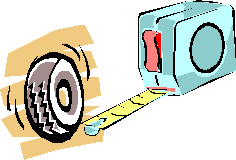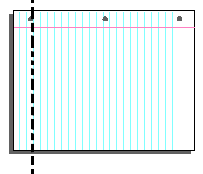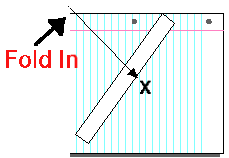Make a Compass
You will need:
A piece of string
A pencil
Paper for drawing on

At the other end, tie a pencil to the string.
Place the pencil upright on to the paper with one hand.
With the other hand, pull the string tight and hold the end firmly
against the paper.
You could use a thumbtack to anchor the string to the paper.
The string should be stretched straight and tight, or taut, between
the pencil and where it is held against the paper.
Move the pencil, keep the string as straight as you can at all
times.
You will find that the pencil moves in an arc shape and you begin
to construct a circle. At first you may experience some difficulty
because your arm may get in the way!
With a little practice, you will be able to draw perfect
circles.
This technique allows you to draw bigger circles than you can with regular compasses. If you exchange the pencil with a piece of chalk, and have a friend help you, you can draw large circles outdoors on the ground for playing games.
Measuring a circle
The measurement of the width of a circle, that is to say from one side of a circle to the other passing through the centre point, is so important that it has it's own name, the diameter . The name given to the perimeter of a circle is also very special, circumference . You can see how the beginning of the word is similar to 'circle'. Do you think it is easier to measure a circle's diameter accurately or to measure its circumference?
Centuries ago, people discovered that when a wheel moves one complete turn it travels several times further than its width. Knowing about the diameter and circumference of a circle is important to be able to work this out.
Try turning some different sized circles along a tape measure laid out on a tabletop. Can you work out how many times more the circle travels than its diameter measurement?

If you thought the circle seems to turn about three times its diameter you are correct. In fact, it is slightly more than three times, about 3.14 times. The number cannot be written exactly. Because of the importance of this measurement it is not only given a special name but its own Greek letter, p, both of them are called pi (pronounced 'pie').
Rather than measure the distance a wheel travels in one turn (which equals its circumference), many people multiply the diameter of the circle by p, or 3.14.
Make a circle from straight lines
You will need:
A sheet of lined paper
A pencil for drawing a cross on the paper
From the sheet of paper, tear a wide strip off the end.
Draw a cross in approximately the centre of the larger piece of paper.

Place the strip diagonally across the sheet of paper so that it touches the cross in the centre. Fold the triangular edge of the sheet over the strip.

Repeat this folding procedure at least 20 times but each time move the strip of paper to a different angle.
